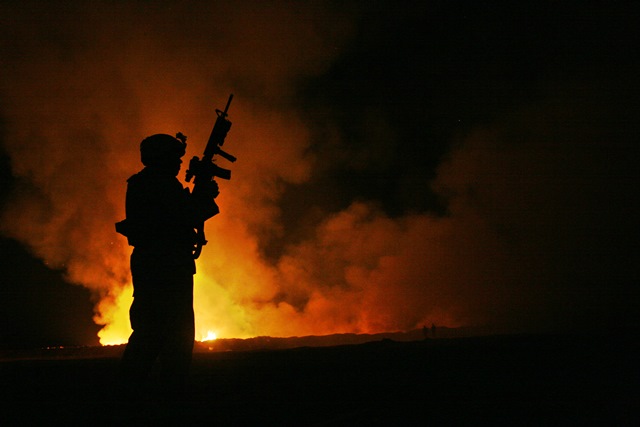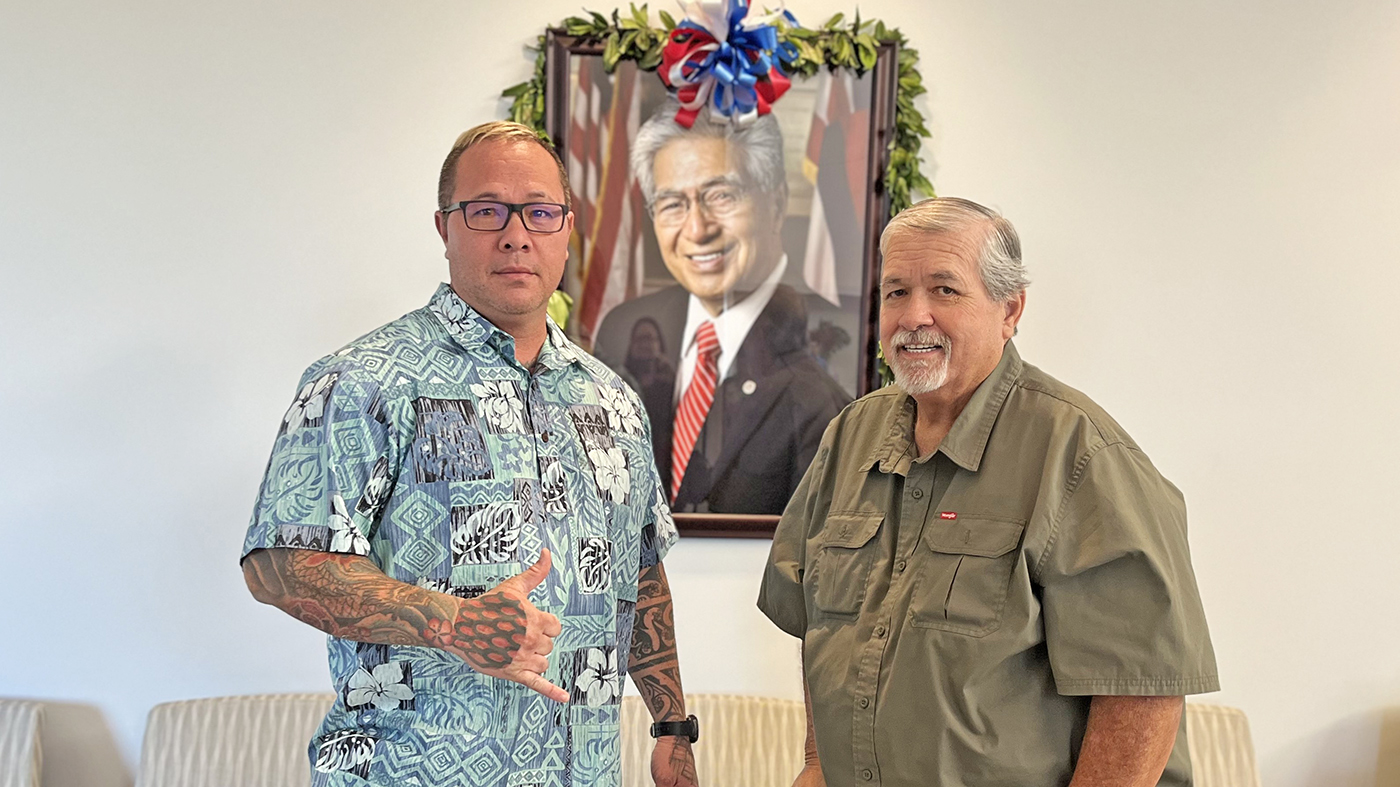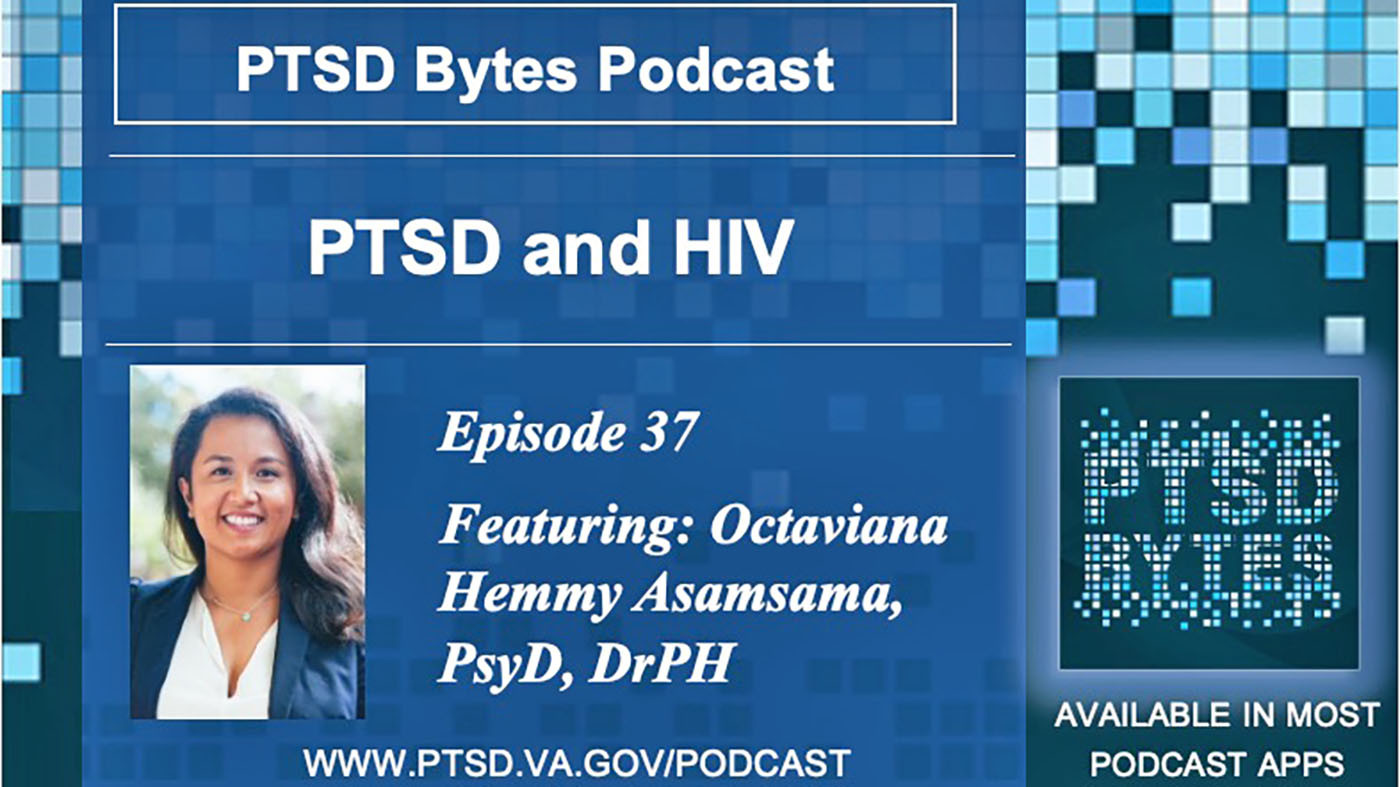Just five months ago, VA launched the Airborne Hazards and Open Burn Pit Registry in response to concerns that Veterans were experiencing a range of respiratory illnesses possibly associated with exposure to burn pits. The registry is open to many Veterans and active-duty Servicemembers who deployed to various locations. This post describes why you should participate in the registry and how it might help uncover links between exposures and certain health conditions.
1. Exposure to Burn Pits was common among Servicemembers overseas and may have health effects.
A burn pit is an area devoted to open-air combustion of trash. The use of burn pits was a common waste disposal practice at military sites outside the United States, such as in Iraq and Afghanistan. Smoke from these pits contained substances that may have short- and long-term health effects, especially for those who were exposed for long periods or those more prone to illness such as individuals with pre-existing asthma or other lung or heart conditions.
Waste products in burn pits include, but are not limited to: chemicals, paint, medical and human waste, metal/aluminum cans, munitions and other unexploded ordnance, petroleum and lubricant products, plastics and Styrofoam, rubber, wood, and discarded food. Burning waste in pits can create more hazards compared to controlled high-temperature burning – like in a commercial incinerator.
Toxins in burn pit smoke may affect the skin, eyes, respiratory and cardiovascular systems, gastrointestinal tract and internal organs.
Most of the irritation is temporary and resolves once the exposure is gone. This includes eye irritation and burning, coughing and throat irritation, breathing difficulties, and skin itching and rashes.
2. Research on the health effects of burn pit exposures specific to Veterans and Servicemembers is limited currently.
At this time, there is conflicting and insufficient research to show that long-term health problems have resulted from burn pit exposure. VA continues to study the health of 
The high level of fine dust and pollution common in Iraq and Afghanistan may pose a greater danger for respiratory illnesses than exposure to burn pits, according to a 2011 Institute of Medicine report.
3. Registry participation is voluntary.
The Airborne Hazards and Open Burn Pit Registry is a database of information about Veterans and Servicemembers. Participation in the registry is voluntary and will not affect access to VA health care or compensation benefits. Veterans and Servicemembers can use the registry questionnaire to report exposures to airborne hazards (such as smoke from burn pits, oil-well fires, or pollution during deployment), as well as other exposures and health concerns.

The registry helps participants to become more aware of their health, while helping researchers to study the health effects of burn pits and other airborne hazards (e.g., sand, dust, and particulates. The online questionnaire can be used to identify health concerns, guide discussions with a health care provider and document deployment-related exposures.
Most Veterans and Servicemembers will complete the questionnaire just once. Some participants may be asked to participate in additional studies that could involve additional questionnaires and exams.
VA will maintain the security of all information provided in the registry.
5. Many Veterans who deployed after 1990 can join the registry.
VA will determine eligibility for the Airborne Hazards and Open Burn Pit Registry based on deployment information from the Department of Defense (DoD). To be eligible, you must be a Veteran or Servicemember who deployed to contingency operations in the Southwest Asia theater of operations at any time on or after August 2, 1990 (as defined in 38 CFR 3.317(e)(2)), or Afghanistan or Djibouti on or after September 11, 2001. These regions include the following countries, bodies of water, and the airspace above these locations:
- Iraq
- Afghanistan
- Kuwait
- Saudi Arabia
- Bahrain
- Djibouti
- Gulf of Aden
- Gulf of Oman
- Oman
- Qatar
- United Arab Emirates
- Waters of the Persian Gulf, Arabian Sea, and Red Sea
6. You need a DoD Self-Service Logon Level 2 account to participate.
You may participate in the registry by completing a web-based health questionnaire at https://veteran.mobilehealth.va.gov/AHBurnPitRegistry. To access the questionnaire, you will need your Department of Defense Self-Service Level 2 logon (DS-Logon). You may apply for a DS-Logon account at https://www.dmdc.osd.mil/appj/dsaccess if you do not already have one. The DS-Logon is a secure, self-service identification that allows active-duty Servicemembers and Veterans to access several websites using a single username and password.
7. You can sign up for the Burn Pit Registry in three easy steps.
Just head here: : https://veteran.mobilehealth.va.gov/AHBurnPitRegistry/#page/home.
Step 1: Check your eligibility.
Step 2: Complete and submit the online questionnaire.
Step 3: Print and save your completed questionnaire for your records.
Veterans who are eligible for the registry are also eligible to obtain an optional no-cost, in-person medical evaluation (note this is not a disability examination).
8. Technical support is available for the registry.
If you are having any problems with registering, you can call the Registry Help Desk from 8 am-8 pm Eastern Time at 1-877-470-5947. Additional help can be found within the Registry Frequently Asked Questions at https://veteran.mobilehealth.va.gov/AHBurnPitRegistry/index.html#page/faq.
9. Help is already available for health issues at VA.
Medical professionals with expertise in military exposures and health care benefits are available at VA medical centers nationwide. Veterans who are already enrolled in VA health care should talk to their primary care provider. Veterans who are not already enrolled should talk to an Environmental Health Coordinator at the nearest VA medical center. Find a local Environmental Health Coordinator by visiting http://www.publichealth.va.gov/exposures/coordinators.asp or calling 1-877-222-8387. Servicemembers should discuss any concerns or health issues with their health care provider.
10. You can file a claim related to health problems believed to be associated with burn pits.
Veterans may file a claim for disability compensation for health problems they believe are related to exposure to burn pits during military service. VA decides these claims on a case-by-case basis. File a claim online. – See more at: http://www.publichealth.va.gov/PUBLICHEALTH/exposures/burnpits/index.asp#sthash.yU8MHBhU.dpuf
For more information about burn pits and burn pit research head here: http://www.publichealth.va.gov/PUBLICHEALTH/exposures/burnpits/index.asp
For more information about the Burn Pit Registry head here: https://veteran.mobilehealth.va.gov/AHBurnPitRegistry/index.html#page/about

Topics in this story
More Stories
Pacific Islands VA opens new Akaka clinic in Kapolei, bringing a variety of VA services to Oahu’s leeward side
Veterans can now navigate VA resources with confidence using the new VA Resource Navigator
In this episode of PTSD Bytes, integrated health psychologist Dr. Octaviana Hemmy discusses treatment for HIV and PTSD.







i worked on the flightline and cargoyard of joint base Balad fm Jan 2004 till Jun 2012, the burnpit was located on the opposite side of our area and many nights the smoke covered the ramp… Where do civilian contractors provide feedback?
What about all the civilian contractors that are having health issues due to being around these burrn pits. If it was bad for the troops, it was also bad for them. But I guess they don’t matter. They were disposable then & they are now.
I served in the Sinai from Aug 91- Feb 91. I was charged with burning all human waste, leftover food, paper, plastic,cardboard etc etc. I used diesal and gasoline to get the job done. I spent hours each day stirring this crap to a small pile of ash. I breathed in so much smoke and toxins, I eanded up in the infirmary with a temperature and difficulty breathing. It’s noted in my records I’m sure. I took a 200 kilometer drive in an ambulance to get to South Camp. I have complained in the past of difficulty breathing and been shot down, and told I have allergies or a small respiratory infection. I want to be able to sign up for this study. The VA has made it so I don’t want to complain about it. They have all the answers yet they won’t do anything about it. It’s discouraging. Now I understand what other Veterans go through when they come to me for help. I am the Post Service Officer at Post 591, Wallingford, Ct.
My unit was at Taji and the pit was bad we worked down Wind 12 to 14 hrs a day . But i got hard proof on the pit pictures of what they were burning and air qaulity read out of days that the air was Red for inmates to be outside but we had to be . We have hsd 4 familys now have babies with heart defects including my Boy.
I read about these burn pits and they were common in Vietnam. I suffer respiratory and cardiac problems. I have a chronic cough my pulmonologist sorry wrong spelling from several major hospitals haven’t been able to pin it down and one of them preaches all the time that my smoking 44 years ago is the cause. They drive me crazy!
My husband was at Joint Base Balad. 2 1/2 years after he returned, he developed Nasopharyngeal Cancer, stage 4. He died July 19, 2013. The ENT who treated him had 3 other patients who served in Iraq with this rare disease. Since he can’t join the registry, how can I register this information due to the uncertainty of any connection with this disease and the burn pits?
Thanks,
Cindy
What about 9/11 responders? A number of the guys I served with have died from lung related cancer/issues!
Somalia needs to be added. We sent over 25000 service men and women to that country and burn pits was the only way to get rid of trash and feces. Just because it was a UN primary mission we are US servicemembers who deserve the recognition of our service and the stuff that happened to us.
What about those individulas in Korea and the states that burnt ELP Paper which is a carbon based printer paper that held secure documentation in TacFire Units
Don’t forget Bosnia veterans they burnt diesel fuel and outhouse barrels right outside our tents
I’m happy to see that finally the veterans from Bosnia & Somalia are speaking up. What about Granada & the Falklands, does anyone remember those conflicts?
I commend the VA for the effort of continuing the research of the burn pit effects. I am thankful to have them looking out for all the Veterans who have served and appreciate the hard work they do. Most of our County Veteran Service Officers are overworked and under appreciated. We need to all take the time to thank them for their service, not only as a VSO but as a Veteran also!
Thank you, I appreciate the hard work you do!
Not all VSOs are veterans. But, you’re right. The majority of them work very hard as veterans advocates and they should be thanked.
I appreciate your kind words. GunnyP, California CVSO 1999 – 2014.
What about South and Central America deployments? There was a huge burn pit at Palmerola Air Base near Comayagua, Honduras during joint operations in the 1980s.
Yes there was but I don’t believe any south or central America deployment is listed
I been suffering due to the burn pit and others problems during my deployment in Iraq, now beside the unprofessional ways from the va to deal with my medical problems, using all types of excused to denied claims, now after several times trying to register myself and requesting provisional passwords, as a PTSD person you are giving me hard time to register myself, because I have problems to remember some of the question’s required to respond, and when you fail to login properly during the first time, for misspelling and others reasons, we are unable to complete our register on time, a tactic used over and over while we are trying to let you know about our medicals problems, even if you are using the words ” for security reasons” when not everyone have access to this web-side.
I understand this program is available to post 1990 veterans. However I that is prejudicial to pre 1990 vets. I was in Vietnam 1968-69 and part of my duty was driving a small tractor pulling several cars while the Vietnamese loaded half-barrels of human waste on them. We would then take them to a burn pit to pour diesel fuel on them and set the burn pit on fire. We did this every morning. Is there a reason this exposures to burning human waste in a burn pit is not considered?
You should inclued ALL the service members I was in Korea before 1990 and as NBC NCO and part of my duties in HQ Platoon I have to attend and coordinated the PIT Burning detail almost every day.I have 2 tours in Korea and claiming for ephysema and pulmonary diseace.
Good that finally somebody is doing something for the noes that were exposed ti this. Another issue is the exposure to the CS gas and life NBC Agents by the 54 MOS.
Thanks
Ismael Hernandez
US Army Vet
what about the burning of trash and human waste in Viet Nam we always had a black fume burning during our day time periods
I think it is great that the VA is starting to recognize the ill effect of burn pits but why is the registration only for southeast asia deployments? As an Infantryman my team had to burn everything when we were deployed to Bosnia, Macedonia (out in sector) and Kosovo (before they built the Camp Bondsteele Mall).Why can’t we register?
What about Vietnam vets? Open pits? U for got them!!!!!!!!!!!
I still believe use veterans need rally Washington DC and va builds for veterans needs and heath care for our future veteran care, no runaround.
When can the Vietnam Vet register, all of the Vet at one time or another were exposed to burn pits or smoke from napalm, either in the field or base. The VA needs to rethink who was exposed to these hazards as far back as the can. Mine is from Vietnam 1968-69 and I have had Asthma now ever since 1993, no one in my family has every had anything like this as far back as we can go and that 5 generations on both sides.